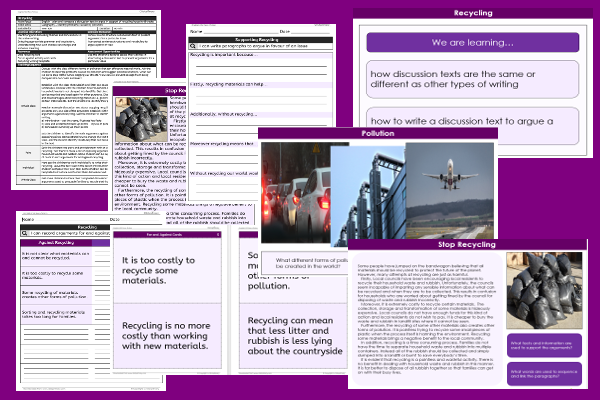Recycling Debate

This English teaching pack for Key Stage Two gets the children to plan and compose a discussion text to illustrate and present some of the arguments that are in support of recycling different forms of household waste.
The class can select and list different arguments for or against recycling a range of different household materials and suggest how the process can protect the environment.
Download this teaching pack including a lesson plan, classroom activities and an interactive presentation to plan and compose a discussion text to illustrate and present some of the arguments that are in support of recycling different forms of household waste
Activities in this teaching pack include a shared reading text to explain how to format and structure a discussion text to illustrate and present arguments in support of recycling household waste, a worksheet and cards to identify and record arguments for and against the issue of recycling materials and a template to structure and format a discussion text to illustrate and present arguments about recycling household waste.
The interactive presentation gets the children to explore how to compose a discussion text to illustrate and present arguments in support of recycling household waste.
This lesson is part of an English scheme of work to get the children to practise composing a selection of discussion texts to debate issues surrounding environmental concerns and protections. There are teaching activities for shared learning, differentiated worksheets to support independent learning and interactive presentations to introduce concepts and key skills.
-

Theme Park Visit
Practise identifying and calculating the timing and duration of rides and events when visiting a theme park on a special family trip
-

Family Holiday Trips
Identify and record how to compose and publish recounts using adverbials of time and place to describe family holidays to different places in the world
-

Money Multiplication
Explain and model how to use standard written calculation methods to multiply money amounts in pounds and pence when solving number problems
-

Sport Teams
Explain and model how to use brackets and dashes to add extra information to sentences describing how to play sports and games as part of a team
